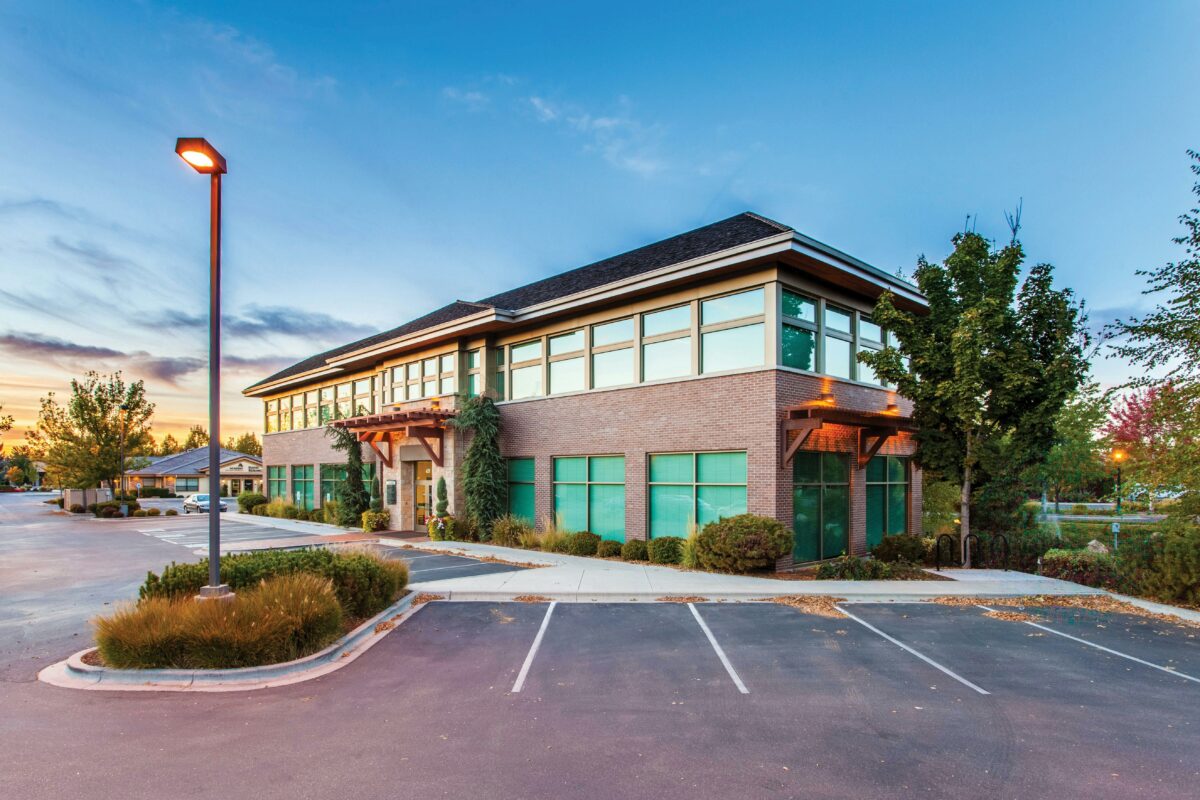In the ever-changing tapestry of urbanity, vast potential lies within the foundations of our homes, schools, and public spaces. Enter the quiet warriors of community development — Architecture Nonprofits. Beyond the steel and glass, they breathe life into the local landscape, achieving remarkable transformations through creativity, volunteerism, and sustainable practice.
As a nonprofit leader navigating the noble path of community service, understanding the role of architecture nonprofits is not just valuable but vital to the sustainability and growth of your mission-minded endeavors.

Unearthing the Need: Architecture Nonprofits in Focus
Why do we need architecture nonprofits? It’s a question with an answer as rich as the communities they serve. These organizations are born from a profound understanding that the built environment influences our behavior, experiences, and aspirations. From fostering inclusivity to nurturing green spaces, nonprofit architects lead the charge to ensure that every street corner, every brick, tells a story of growth and equality.
As leaders in the nonprofit world, it’s crucial to recognize the power structures embedded in the design of our cities. Architecture nonprofits can provide the necessary counterbalance, empowering communities to shape their own spaces. With this understanding, you can tailor your mission to leverage the expertise of architects and urban planners, ensuring that your community’s voice is architecturally amplified.
Resources Galore: Navigating Support Systems for Community Projects
For nonprofit organizations, tapping into a myriad of resources and opportunities can spell the difference between an idea and an impactful reality. Grants, pro bono services, and partnerships with educational institutions are just the tip of the iceberg. Initiatives such as “Public Interest Design” harness the talents of students and professionals to bring architectural solutions to underserved communities.
Furthermore, technology has paved the way for platforms that connect nonprofits with architects passionate about volunteering their skills for the greater good. And beyond manpower, there are toolkits and guidebooks readily available, designed to navigate the complexities of community-centric architectural projects. By exploring these avenues, nonprofits can not only gain access to valuable expertise and tools but also foster relationships that can strengthen and sustain their architectural projects long-term.
The Ripple Effect: How Architecture Nonprofits Reshape Communities
The hands of architecture nonprofits craft more than mere buildings; they shape the very essence of community. By creating inclusive design principles and innovative urban solutions, these organizations unlock the potential for social cohesion and individual empowerment.
The architecture of nonprofit buildings serves as a catalyst for community health, both in the physical and socio-economic sense. Thoughtful design can promote well-being by providing spaces that encourage physical activity, such as community gardens or fitness facilities, while also being inclusive of all community members.
Moreover, these mission-minded structures can become hubs for health services, education, and social initiatives that address the broader determinants of health like poverty and education. By valuing flexibility and multi-purpose usage, these buildings adapt over time to meet the evolving needs of the communities they support. This, in turn, strengthens the fabric of neighborhoods and fosters a sense of ownership and pride among its residents.
When communities are part of the architectural conversation, the results are not just functional—they’re inspirational. Empower residents to take part in the design process. Thematic discussions, workshops, and participatory design underscore the essence of community respect and joyful urban living.
The architectural legacy left by these nonprofits doesn’t just stand; it resounds in the hearts and minds of the communities that thrive within it.
Volunteer Power: Mobilizing People for the Built Community
Volunteers are the scaffolding upon which the dreams of architecture nonprofits rest. As a nonprofit leader, designing a robust volunteer program is key to supporting the labor-intensive nature of community architecture. Engaging skilled and unskilled individuals alike, from architects to eager amateurs, can bolster the impact of your projects and nurture a community of changemakers.
Highlighting the tangible results of architecture projects can serve as a powerful catalyst for community engagement and volunteer recruitment. By illustrating the direct impact—such as the revitalization of a neglected park or the construction of a much-needed community center—potential volunteers can visualize the difference their efforts can make.
Sharing personal narratives and before-and-after images can stir emotions and motivate involvement. A well-told story of transformation not only conveys the value of the architectural work but also bridges the gap between abstract plans and the real-life benefits for community members. Encouraging advocates to share their experiences and the joyful moments of community enhancement can foster a contagious enthusiasm, leading more individuals to invest their time and skills in the collective endeavor of building a stronger community.
Leverage technology to connect with a broader volunteer base — from Virtual Reality workshops that ignite empathy to online design platforms that democratize the creative process. Tailored training programs ensure volunteers are equipped with the requisite skills and passion to contribute meaningfully. By embracing this volunteer tapestry, your nonprofit can craft a legacy of hands-on, community-driven design.
The Art of Fundraising: Sustaining the Vision of Architecture Nonprofits
As a nonprofit leader, fundraising is your professional grand design — it’s the art of weaving financial support for the community’s architectural aspirations. From traditional methods like capital campaigns and galas to cutting-edge crowdfunding and social media campaigns, the means are as creative as the designs they support.
Craft compelling narratives that resonate with donors, illustrating the transformative power of architecture in community building. Ensure transparency and stewardship in your financial practices to build trust and maintain lasting donor relationships. By treating fundraising as an extension of your nonprofit’s creative process, you create spaces for community support that are as aesthetic as they are effective.

In Action: Case Studies of Architecture Nonprofits Changing Realities
Nurturing future talent is essential for the future of innovative and community-focused architecture, a principle that the Keiser Design Group (KDG) works to prioritize. With a magnanimous approach to mentorship, KDG dedicates time and expertise to develop young, aspiring architects and construction managers. By offering internships and apprenticeship programs, they provide invaluable hands-on experience that elevates classroom theory into real-world wisdom.
Through critiques and collaborative projects, KDG volunteers actively engage in guiding students toward practical skills and a profound understanding of architectural impact. Their commitment extends beyond technical knowledge, fostering a sense of responsibility towards sustainable and inclusive design. By instilling these values early in their careers, KDG ensures that the future of architecture and community development is entrusted to conscientious and skilled individuals, ready to carry forth the legacy of transformative change.
Embracing Technology: The Role of Digital Innovation in Architectural Nonprofits
In our digital age, the role of technology cannot be overstated. Architecture nonprofits can harness the power of 3D printing, augmented reality, and software simulations to bring their designs to life and create engaging community spaces. Virtual community meetings, social media outreach, and online design platforms break down geographical barriers, allowing for a wider reach and deeper impact in the communities served.
The Cry of Sustainable Design: A Future for Mission-Minded Architecture
Sustainability is not just a trend—it’s a creed that architecture nonprofits should adopt wholesale. From using recycled materials to implementing energy-efficient systems, sustainable design provides a roadmap for the preservation of our planet. Embracing sustainable practices not only benefits the environment but also supports the economic and social well-being of communities.
Sustainable architecture represents more than an ethical choice for nonprofits; it is a statement of their commitment to the future. In a world facing environmental concerns, nonprofits adopting sustainable practices are not only leading by example but also catalyzing important conversations about stewardship and conservation.
They present designs that harmonize with the environment, prompting a re-evaluation of how communities interact with their surroundings. This approach to building not only reduces the ecological footprint but also often comes with reduced long-term operational costs, a crucial consideration for nonprofits aiming to maximize their impact with often limited resources. In essence, sustainable design is not merely an architectural philosophy—it is the embodiment of the responsibility we hold to the planet and future generations.
Into the Future: Where Do Architecture Nonprofits Go From Here?
As we peer into the horizon, it’s clear that the need for mission-minded architecture has never been greater. Architecture nonprofits stand at the vanguard of a new urban renaissance, poised to craft the next chapter of community life. With sustainability as our guide and innovation as our tool, there is no limit to what we can achieve. The future of architecture nonprofits is not just about building structures; it’s about building futures.
In conclusion, architecture nonprofits are not just about the buildings they design and construct; they are about the communities they touch, the lives they uplift, and the futures they build.
Connect with Keiser Design Group today. Let’s discuss how we can collaborate to create a building that stands as a testament to your mission. Reach out to us and let’s start crafting the future together.


